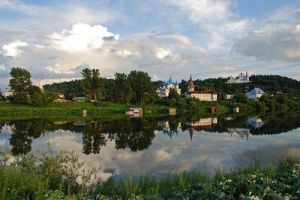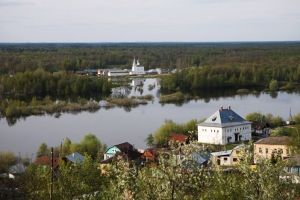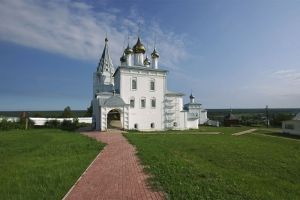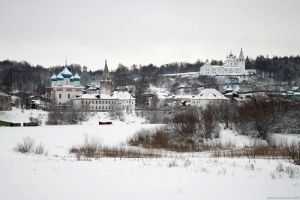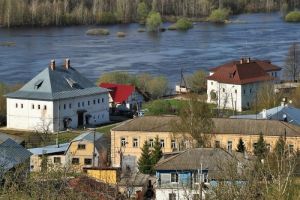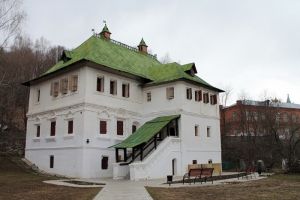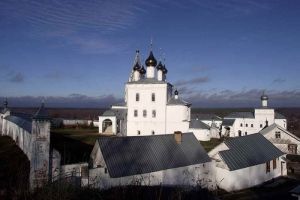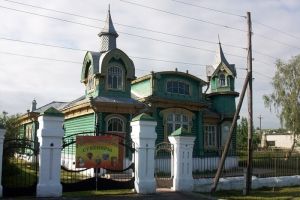Gorokhovets
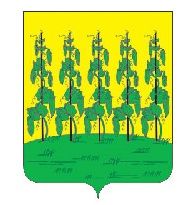
Gorokhovets is the administrative center of the Gorokhovets district of the Vladimir region with a population of 13,105 people (2016). The town is located in the Volga-Oka interfluve, on the high right bank of the river Klyazma, on the M-7 "Volga" highway, 157 km east of Vladimir. Gorokhovets is included in the list of historical settlements (cities) of Russia, approved by the Ministry of Culture of the Russian Federation in 2010 (there are 41 settlements in the list).
History
The first Slavs, descendants of whom can be considered the indigenous population of Gorokhovets, were settled on these lands in the early 11th century. The city was founded by Andrey Bogolyubsky in 1168 as a border fortress on the eastern outskirts of the Vladimir-Suzdal principality for protection from the main enemies of that time – the Volga Bulgarians. The original nucleus of Gorokhovets was the Detinets (Kremlin) located on the Nikolsky mountain, which was surrounded by ramparts up to five meters high. At that time, Gorokhovets was called the "Town of the Blessed Virgin", as it was a "tithe town" ("dessiatine"), the revenues from which went to the maintenance of the Vladimir Assumption Cathedral.
The appearance of the name "Gorokhovets" by some historians (in particular, N.I. Andreev) is associated with the beginning of Mongolian raids on Russian lands, which were committed mainly in winter, when the rivers froze. To avoid ruin, the local people after the harvest moved to temporary shelters in the forest on the other bank of the Klyazma near the mountain. This movement to hide (in old Russian – "khovatsya") went downhill through the settlement, to which it gave the name – "Gorokhovets".
The first mention of Gorokhovets in the Laurentian Chronicle is associated with the ruinous invasion of the troops of the Mongol khans in 1239. Throughout the 15th and 16th centuries, the town was subjected to raids by Kazan Tatars, but it was still being rebuilt and continued to live. And the memory of the ancient heroic defenders of the town remains to this day in the legends of Bald and Puzhalova (Frightening) mountains.
In the 16th century, Gorokhovets was a volost town of the Suzdal district of the Moscow principality. In the middle of the 17th century, it was the patrimony of Patriarch Nikon. In the 17th century, in the Gorokhovets volost of the Suzdal district was the patrimony of the Russian military and political figure prince D.M. Pozharsky – the village of Lower Landeh near Gorokhovets. It was from there, in October 1611, that the prince was invited to Nizhny Novgorod to lead the second people’s militia against Polish interventionists. Gorokhovets detachment then also joined the militia and in the autumn of 1612 participated in the liberation of Moscow from the invaders.
In the 17th century the trading activity of the townspeople increased, the role of the town in the economy of the Moscow State was gaining weight. The appearance of Gorokhovets was changing: stone-built temples, residential chambers and administrative buildings were erected on the funds of Gorokhovets merchants in the city. Modern Gorokhovets adorn the unique monuments of the 17th century – seven merchant's stone chambers from twenty, preserved in Russia. Today in one of them – the house of Ershov (Sapozhnikov) – there are exhibits of the Gorokhovets Historical and Architectural Museum.
To perpetuate the memory of themselves, the merchants of Gorokhovets built on their own funds also temples in the 17th century. Nine of them are preserved today (including the central Annunciation Cathedral) and entered the ensembles of the three currently functioning monasteries – Troitsko-Nikolsky, Sretensky and Znamensky.
In 1778 Gorokhovets became a county town of the Vladimir province and in 1781 received its coat of arms: in the upper part – a provincial lion on a red background in the crown and with a cross in the front paw, in the lower part – an image of pea stalks on a gold background. Officials of the heraldic service, probably, the name of the town associated with the name of this plant ("gorokh" – in Russian). The modern coat of arms, approved by the Gorokhovets Council of People's Deputies in 2008, no longer has the upper part with the provincial lion, but retains five stalks of peas, twisting along the poles in a golden field on the green earth.
Since the 18th century, Gorokhovets County was famous for its craftsmen – carpenters and coppersmiths. Gorokhovets carpenters went down in history under the name of "yakusha" – by the designation of one of the villages of the district. The unique in form and decoration wooden houses of local carpenters, preserved from the end of the 19th century, are the visiting card of Gorokhovets today. In one of them – the house of M.I. Shorin – the House of Folk Art and Crafts is organically placed today.
Industrial application of their work in the 19th century Gorokhovets carpenters-otkhodniki (itinerant worker) received in the oil fields of the Caucasus, where they built wooden towers for wells. Distribution of the waste from the Gorokhovets County was facilitated by the opening in 1862 of a regular railway movement between Vladimir and Nizhny Novgorod. Especially active was the departure of the coppersmiths, covering in the 1890s up to 60% of the male population. Gorokhovets masters- coppersmiths (they were nicknamed " capercaillies" due to hearing loss from the constant rumble of a hammer on the rivets of boilers) were in demand on the installation of oil cracking operations in the Caucasus, construction of the Black Sea fleet, bridges across the Volga.
At the end of 19th century, there were industrial enterprises in Gorokhovets itself. Gorokhovets boiler plant was founded by local merchant Ivan Shorin at the turn of the 19th-20th centuries. Since 1902, it has become the Shipbuilding plant – the pride of Gorokhovets. In 1907, the factory built an iron oil barge "Marfa Posadnitsa" – the world's first river vessel of this class and size (172 m long and 24 m wide). In 1913 Gorokhovets built a 200 meter long barge for the Caspian Sea, which the writer Konstantin Paustovsky called "a floating town".
Economy
In the Soviet years, the Gorokhovets Shipbuilding plant was a town-forming enterprise. In addition to barges, it built in large numbers small river steamboats, scows for dredges and other vessels. The enterprise also worked for defense: it launched ships for the demagnetization of warships, ships-hospitals. Since the second half of the 1990s, the plant was in a difficult financial situation, was stopped and declared bankrupt.
In 1961 the elevator-transport equipment plant "Elevatormelmash" began to operate in Gorokhovets . In 2001, a subsidiary of the Turkish company "Rusjam" was opened in Gorokhovets – Russia's largest manufacturer of glass containers, including a lightweight disposable bottle.
Famous people
Many famous people of Russia were born or worked in Gorokhovets: I.M Simonov (1794-1855), Russian astronomer, one of the discoverers of Antarctica; F.P. Savarensky (1881-1946), Russian, Soviet geological engineer, academician of the USSR Academy of Sciences, one of the founders of engineering geology in Russia and the USSR; N.N. Odnoletov (1889-1936), a poet, public figure, who made a great contribution to the development of the culture of the Gorokhovets County, etc. Gorokhovets is proud of its fellow countrymen, participants in the Great Patriotic War. 10 of them received the title of Hero of the Soviet Union during the war.
Preparation for the anniversary of Gorokhovets
On May 28, 2014 President of the Russian Federation V.V. Putin signed the decree "On the celebration of the 850th anniversary of the founding of Gorokhovets", which is scheduled for 2018. On September 29, 2015 by the order of the Government of the Russian Federation approved the composition of the organizing committee for the preparation for the anniversary of the town, headed by the Minister of Finance of the Russian Federation, A.G. Siluanov.
By the 850th anniversary, extensive works will be carried out to restore monuments in the historical core of Gorokhovets, develop new tourist routes, a network of hotels, hostels and catering for tourists. These measures should increase the tourist flow from the current 70 thousand almost 2.5 times by 2018, turning Gorokhovets into one of the main tourist centers of the Vladimir region.
 Tourism portal of the
Tourism portal of the